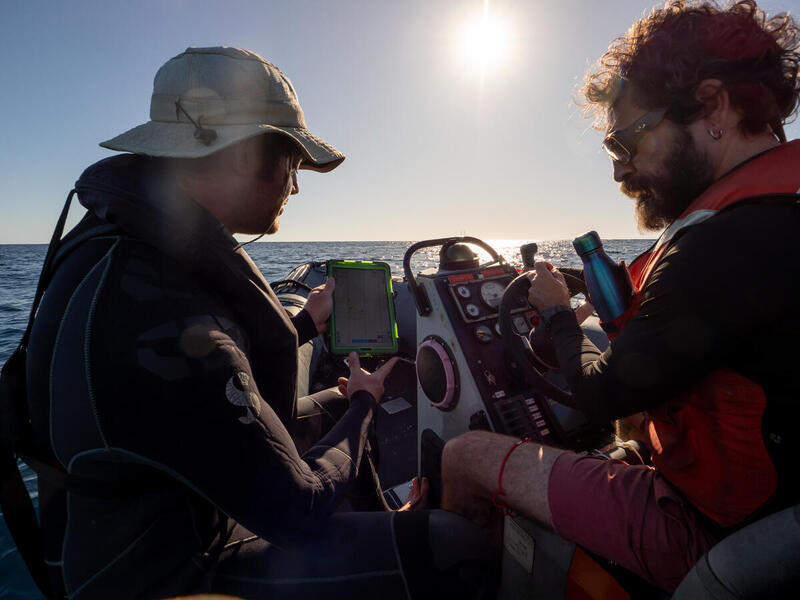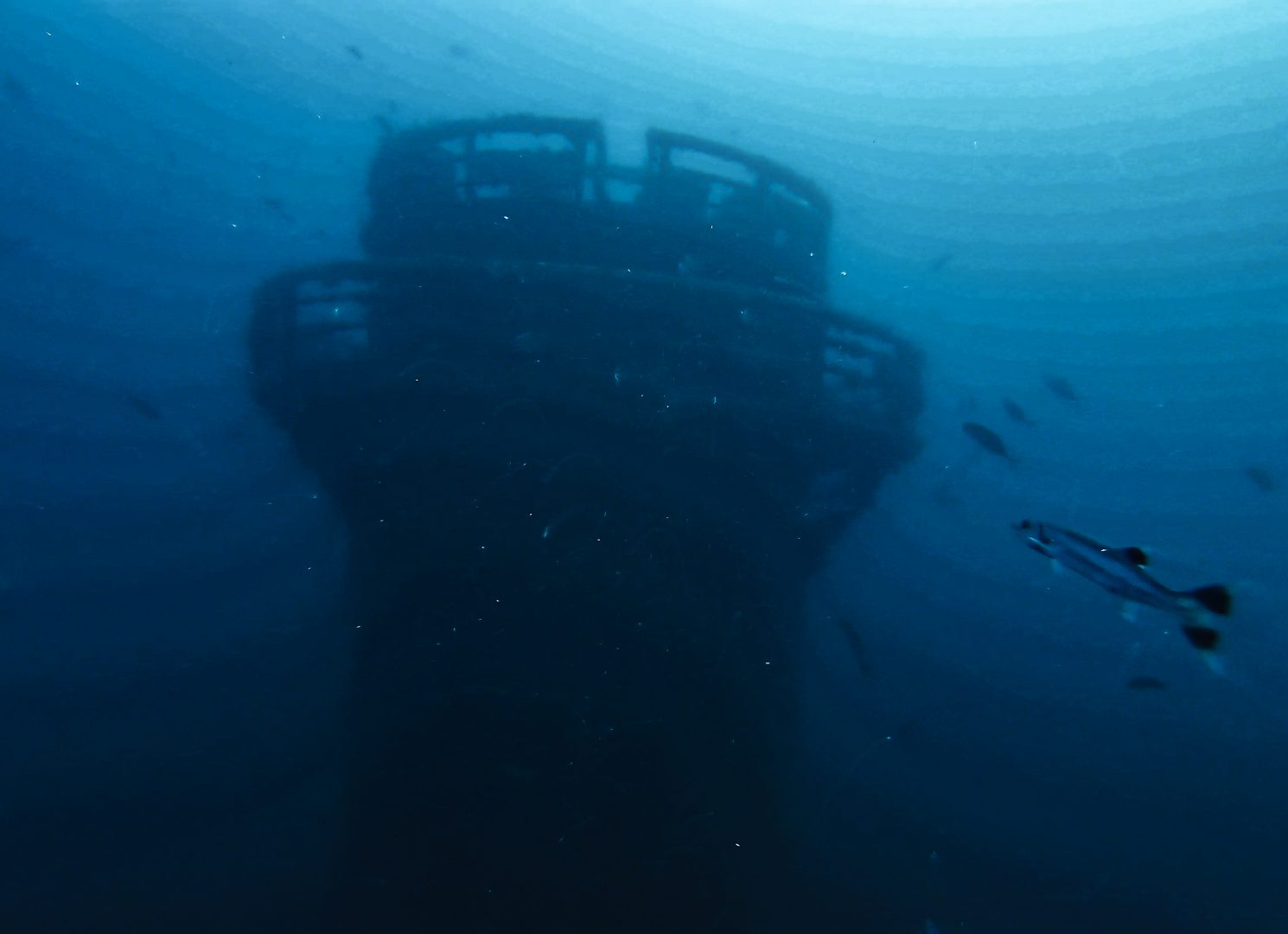We set off at 7am, a little after sunrise. The waters were surprisingly calm – unlike my stomach, which was churning with excitement. We were looking for something no one had seen for a decade: a massive riser turret mooring, the size of an apartment block. For 25 years, it had been used to exploit an oil and gas field off the coast of Western Australia.

The tower had made its owners a fortune, producing 127 million barrels of oil and 62 billion cubic metres of gas. But when the oil ran out, the company moved on and left the tower behind. In 2013 it sank beneath the waves and crashed onto the ocean floor.
The tower wasn’t far from Ningaloo Reef and Exmouth Gulf – two unbelievable biodiversity hotspots. Australia’s oil and gas regulator NOPSEMA was concerned that the tower could contain toxic chemicals. They’d ordered it to be removed in 2021. But its owner – first BHP and now Woodside – showed no signs of acting. We wanted to find the tower, get the first video footage of it sitting on the seabed and shame Woodside into action.
We spent weeks researching the tower, pouring over navigational charts, letters from the oil and gas regulator NOPSEMA and various decommissioning plans. The top was at least 40m below sea level, too deep for us to dive safely.
Colleagues in other Greenpeace offices with experience of this sort of underwater detective work had plenty of advice. We decided to use an ROV – a remote operated vehicle – to capture the video footage we were after. They can be tricky to use on the open sea, even for an experienced pilot.
But filming the tower would be the easy part. Finding it would be a much greater challenge. On a previous expedition, some of our European colleagues had spent days searching for a sunken oil tower but had been unable to find it. The tower we were looking for was clearly marked on the map, but the water was well over 100m deep, far deeper than our little ROV could go. If the tower had fallen over, or shifted in a storm, we’d have no chance of finding it.
I didn’t get much sleep the night before, tossing and turning in my bunk. Was this going to be a pointless endeavour: hours – or even days – of searching with nothing to show for it?
Finally my alarm went off. I had half a cup of coffee, too nervous to want anything to eat, and headed to the helideck. We loaded the rhibs – camera equipment, sonar, ROV – and wriggled into our waterproofs. Suddenly it was time to go.
I shouldn’t have worried. After a few minutes of searching we saw something on the sonar. Something huge. It was the tower! We lowered the ROV into the water and watched it sink into the depths. Something flashed in front of the camera – a shark, moving too fast to identify. Then out of the eerie blue silence we saw a shadow, slowly coming into focus. We’d found it!

An hour later and we were back on the ship, hooking the camera up to the TV in the mess. The crew huddled around as we watched the footage we’d captured of a giant, rusted mess of metal, clearly degrading after all of those years at sea. I gave myself a second to savour the moment, before calling the team in the office to give them the good news.

